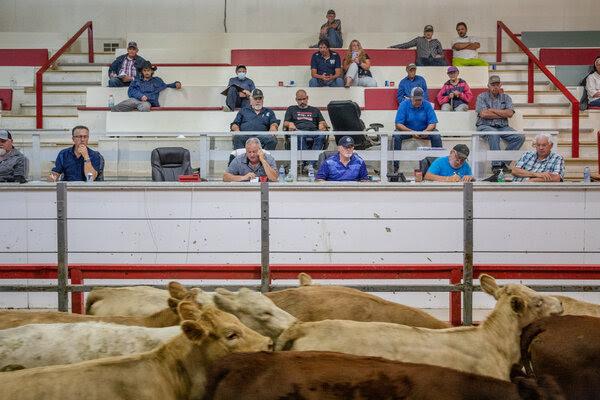Canada’s Drought Is Forcing Farmers to Make Once-Unthinkable Choices |
By Vjosa Isai |
We’re halfway through the summer and since the beginning of the season, the effects of extreme weather in Western Canada have been relentless. The devastation in British Columbia and the Prairies, including raging wildfires and extreme drought, are threatening lives and livelihoods. |
In June, we covered the heat wave that seared the Pacific Northwest. The conditions exacerbated wildfires that tore across British Columbia’s Interior region and left in ashes the village of Lytton — the town that saw the hottest temperature ever recorded in Canadian history. |
|
Recently updated figures released by British Columbia’s coroner show the service responded to 569 sudden deaths — where the cause has now been confirmed as heat-related — between June 20 and July 29. Almost 80 percent of those people died during the last week of June, when Lytton shattered its own heat record for three consecutive days. |
Scientists are working to count the vast death toll on wildlife in British Columbia. But as extreme drought seizes over parts of the Prairies, cattle farmers in Manitoba are wrestling with a different calculation: how much longer they can hold onto their livestock. |
Photographer Brett Gundlock, on assignment with The Times, traveled to Manitoba in July and visited several farms and an emergency cattle sale at the Ashern Auction Mart, in the province’s Interlake region. It was the earliest cattle sale that this auction house has ever seen in a summer season, according to its longtime auctioneer. |
I spoke to eight Manitoban farmers and a handful of scientists for our story this week, cataloging the drought’s effects on farming families and the province’s agricultural economy. |
|
The ranchlands, already baked in the heat, were also under siege by grasshoppers eating the crops. |
“A lot of guys say it’s almost biblical how bad they are,” Joe Bouchard, a farmer and owner of a cow-calf operation, told me. “There are swarms of them, the ground is just crawling with them.” |
But the infestation is not currently considered an outbreak given the geographically varied grasshopper population levels, said John Gavloski, an entomologist with Manitoba Agriculture and Resource Development, a department of the provincial government. |
Dan Johnson, a grasshopper expert and professor at the University of Lethbridge, in Alberta, said that like other coldblooded insects, grasshoppers rely on the environment to regulate their body temperature. |
“They’re partly in control, but in a bigger way, they’re at the mercy of the weather and the climate, so as we get hot weather — and we probably will have it more and more often now — they really do well,” he said. The grasshopper levels have recently been low, but the current heat will have them maximizing their survival and reproduction, Mr. Johnson added. |
One third-generation farmer I spoke to, Stuart Melnychuk, is selling off most of his 250-cow herd because of the dry pastures and lack of feed. He also runs a grain farm and has been trying to rid his cereal crops of grasshoppers, to no avail. |
“I tried to control them in my barley field that I was going to end up baling for feed for cattle. I mean, between the drought and the grasshoppers, it’s only assessed at 30 bushels an acre of barley,” Mr. Melnychuk said, where typically he would yield at least three times as much. |
|
Contributing to the drought are “heat domes,” hot air trapped in high-pressure atmospheric conditions. The worst heat dome occurred in June and they persist over Manitoba, a meteorologist told me, preventing precipitation. A team of scientists say that the extraordinary heat would not have been possible without the influence of human-caused climate change. |
Michael Duguid took a new approach to farming about five years ago by adopting regenerative agriculture on his cattle farm, with techniques that help prevent wind erosion of the soil and keep intact the grasslands that are a habitat for animals including the burrowing owl, an endangered species in Manitoba. |
“And so you take the cattle off landscape, we’re going backward,” he said. |
Trans Canada |
|
|
Vjosa Isai joined The New York Times as a Canada news assistant in June. Follow her on Twitter at @lavjosa. |






No comments:
Post a Comment